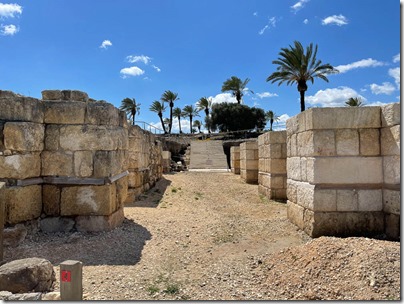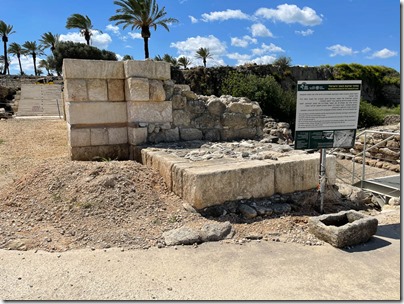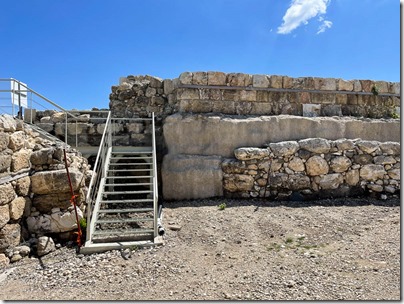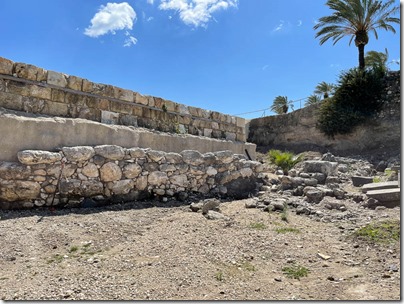“An ancient stone weight dug up in Jerusalem has been found to be far heavier than the amount written on its surface, leading archaeologists to assume it was used to cheat in trading.” The discovery was presented at a conference in Jerusalem on Thursday (video in Hebrew here).
A report has recently been published on the overt and covert involvement of Israelis in archaeological research in the West Bank between 1948 and 1967.
Work has begun to renovate the bridge leading from the Western Wall plaza to the Temple Mount.
A new app allows visitors to explore the archaeological remains of the Church of the Glorious Martyr recently excavated near Beth Shemesh. The latest issue of BAR has more information about the church, and Owen Jarus provides a summary.
Archaeologists working in Saqqara used ancient Egyptian technology to raise a sarcophagus to the surface (3-min video).
Archaeologists announced the discovery of a settlement in Alexandria dating back to the 2nd century BC, including a sculpture of Alexander the Great.
“One of the most important religious centers of the ancient world, the city of Akhmim in southern Egypt is presented in the exhibit Akhmim: Egypt’s Forgotten City, currently on display in the James Simon Gallery of the Berlin State Museums.”
The “wine of Lebanon” mentioned by the prophet Hosea was famous in antiquity. An article in The Ancient Near East Today describes some new archaeological evidence for the production of Phoenician wine.
The skull of a woman who underwent the world’s first brain surgery will be reconstructed using a beeswax technique.
Norwegian authorities “confiscated approximately 100 antiquities from the extensive collection of Martin Schøyen which Iraqi authorities believe were illicitly removed from their country.”
On Sept. 19, Yosef Garfinkel will be speaking in the next Friends of ASOR webinar on the topic of “David, Solomon, and Rehoboam’s Kingdom—The Archaeological Evidence.”
On Dec 1, Andrea Berlin will be speaking in the BAS Scholars Series on “The Rise of the Maccabees:What Archaeology Reveals About Antiquity’s Last Independent Jewish Kingdom.”
This week’s program on The Book and the Spade: Ashkelon basilica, Sussita theater, missing walls, with Clyde Billington.
Lois Tverberg takes a Hebraic look at the gospel and its surprising bearers.
“For the Jewish New Year, Joan Nathan composes a dish that pays tribute to foods that the biblical Canaanites might have eaten.”
HT: Joseph Lauer, Agade, Arne Halbakken, Ted Weis, Alexander Schick



